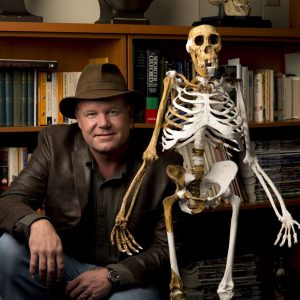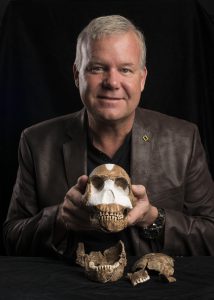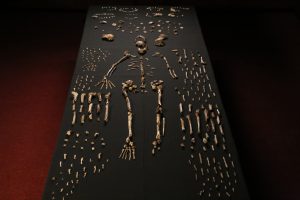
TUSCALOOSA, Ala. — Paleoanthropologist and National Geographic Explorer-in-Residence Dr. Lee Berger will present “Almost Human: The Discovery of Homo naledi” Monday, April 18, in The University of Alabama’s biology building auditorium.
Best known for his discovery of Australopithecus sediba and Homo naledi and the excavation of Rising Star, a dolomite cave system about 30 miles outside of Johannesburg, Berger is the Reader in Human Evolution and the Public Understanding of Science at the Institute for Human Evolution, School of GeoSciences, University of the Witwatersrand in Johannesburg.
He holds an adjunct professorial position in the department of anthropology at the University of Arkansas. He has conducted numerous expeditions as an explorer for National Geographic and was winner of the Society’s first Research and Exploration Prize in 1997.

Berger is one of the leading paleoanthropologists in the world, said Dr. William Bomar, executive director of UA Museums. In 2008, he discovered Australopithecus sediba, possibly one of the earliest ancestors.
Last fall, he captured international attention when it was announced that he discovered, deep in a South African cave, hundreds of hominid fossils representing a new species he named Homo naledi. Members of this new species seem to have buried their dead in this cave, a behavior previously thought to have been practiced only by humans.
“Berger is on the cutting edge of his field and has been in high demand as a speaker around the world,” Bomar said. “Just before he lectures at UA, he will be speaking at the National Geographic headquarters in Washington D.C. We are thrilled that UA Museums can bring a speaker of this caliber to our campus.”

Berger will tell the incredible story of the discovery of Homo naledi and explain the significance of the find to the understanding of human evolution during Monday’s 7:30 p.m. lecture in the UA Biology Building auditorium.
Reservations are not required, but space is limited.
“The story of Berger’s so-called ‘Rising Star Expedition’ is fascinating,” Bomar said. “Berger himself couldn’t fit through the narrow passages to reach the chamber that held the fossils. After sending his teenage son into the cave for an initial assessment, he realized the significance of the find and recruited a courageous team of very thin females from around the world to perform the excavations.
“He also called upon his friend, famed underwater archaeologist Robert Ballard to provide robotic camera equipment. It is an incredible story that will be recounted in detail at the lecture.”
Contact
Kim Eaton, UA media relations, 808-640-5912, kkeaton@ur.ua.edu
